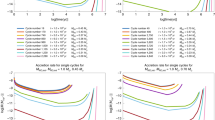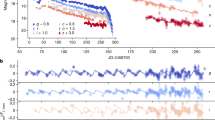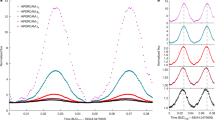Abstract
SS Cygni is by far the best studied dwarf nova; since its discovery its brightness variations have been monitored almost continuously, mainly by members of the American Association of Variable Star Observers (AAVSO), the Variable Star Section of the British Astronomical Association and L'Association Français D'Observateurs D'Etoiles Variables (see Fig. 1). More than 600 outbursts have been observed to date. The eruption cycle of the dwarf nova SS Cygni behaves as a relaxation oscillator, with outburst energy correlated with the following quiescent waiting period. Two distinct, wide and narrow outbursts exist. The outburst behaviour is closely related to outburst rise-time, and to the quiescent brightness level. There is a strong tendency for low-amplitude, slow rise-time outbursts to be clustered in periods associated with bright quiescent levels. We show here that the behaviour of SS Cygni is in close agreement with theoretical predictions of dynamically unstable states of the red star when it fills the Roche-lobe, and is in conflict with the assumptions of early disk instability models.
This is a preview of subscription content, access via your institution
Access options
Subscribe to this journal
Receive 51 print issues and online access
$199.00 per year
only $3.90 per issue
Buy this article
- Purchase on Springer Link
- Instant access to full article PDF
Prices may be subject to local taxes which are calculated during checkout
Similar content being viewed by others
References
Campbell, L. Ann. Harvard Coll. Obs. 90, 93 (1934).
Bailey, J. J. Br. astr. Ass. 86, 30 (1975).
Sterne, T. E. & Campbell, L. Ann. Harvard Coll. Obs. 90, 189 (1934).
Campbell, L. Popular Astr. 49, 92; 50, 225; 51, 400; 53, 409; 55, 105; 56, 110; 57, 141 (1941–49).
Mayall, M. W. Popular Astr. 58, 90; 59, 161 (1950–51).
Mayall, M. W. J. R. astr. Soc. Can. 46, 151; 47, 117; 48, 70; 49, 119; 50, 177; 51, 219; 52, 137; 53, 145; 54, 149; 55, 145; 56, 133; 57, 125; 58, 143; 59, 147; 60, 153; 61, 155; 62, 141; 63, 173; 64, 205; 65, 141; 66, 179, 67, 159 (1952–73).
Mattei, J. A. J. R. astr. Soc. Can. 68, 169; 69, 149; 70, 209; 71, 7 371; 72, 301; 74, 317 (1974–80).
Kruytbosch, W. E. Bull. astr. Inst. Neth. 144, 145 (1928).
Brecher, K., Morrison, P. & Sadun, A. Astrophys. J. Lett. 217, L139 (1977).
Bath, G. J. Mon. Not. R. astr. Soc. 171, 311 (1975).
Bath, G. T., Evans, W. D., Papaloizou, J. C. B. & Pringle, J. E. Mon. Not. R. astr. Soc. 169, 447 (1974).
Bath, G. T. & Pringle, J. E. Mon. Not. R. astr. Soc. 194, 967 (1981).
Mantle, V. J. & Bath, G. T. Mon. Not. R. astr. Soc. 202, 151 (1982).
Papaloizou, J. C. B. & Bath, G. T. Mon. Not. R. astr. Soc. 172, 339 (1975).
Bath, G. T., Pringle, J. E. & Whelan, J. A. J. Mon. Not. R. astr. Soc. 190, 185 (1980).
Bath, G. T., Edwards, A. C. & Mantle, V. J. Mon. Not. R. astr. Soc. (in the press).
Osaki, Y. Publ. Astr. Soc. Jap. 26, 429 (1974).
Shelley, P. B. Arethusa in Shelley (ed. Raine, K.) 243 (Lane, London, 1981).
Author information
Authors and Affiliations
Rights and permissions
About this article
Cite this article
Bath, G., van Paradijs, J. Outburst period–energy relations in cataclysmic novae. Nature 305, 33–36 (1983). https://doi.org/10.1038/305033a0
Received:
Accepted:
Issue Date:
DOI: https://doi.org/10.1038/305033a0
This article is cited by
-
Observations and theory of cataclysmic variables: On progress and problems in understanding dwarf novae and nova-like stars
Space Science Reviews (1994)
-
The decay of dwarf nova outbursts
Space Science Reviews (1985)
-
Cataclysmic variable stars
Astrophysics and Space Science (1984)
Comments
By submitting a comment you agree to abide by our Terms and Community Guidelines. If you find something abusive or that does not comply with our terms or guidelines please flag it as inappropriate.



